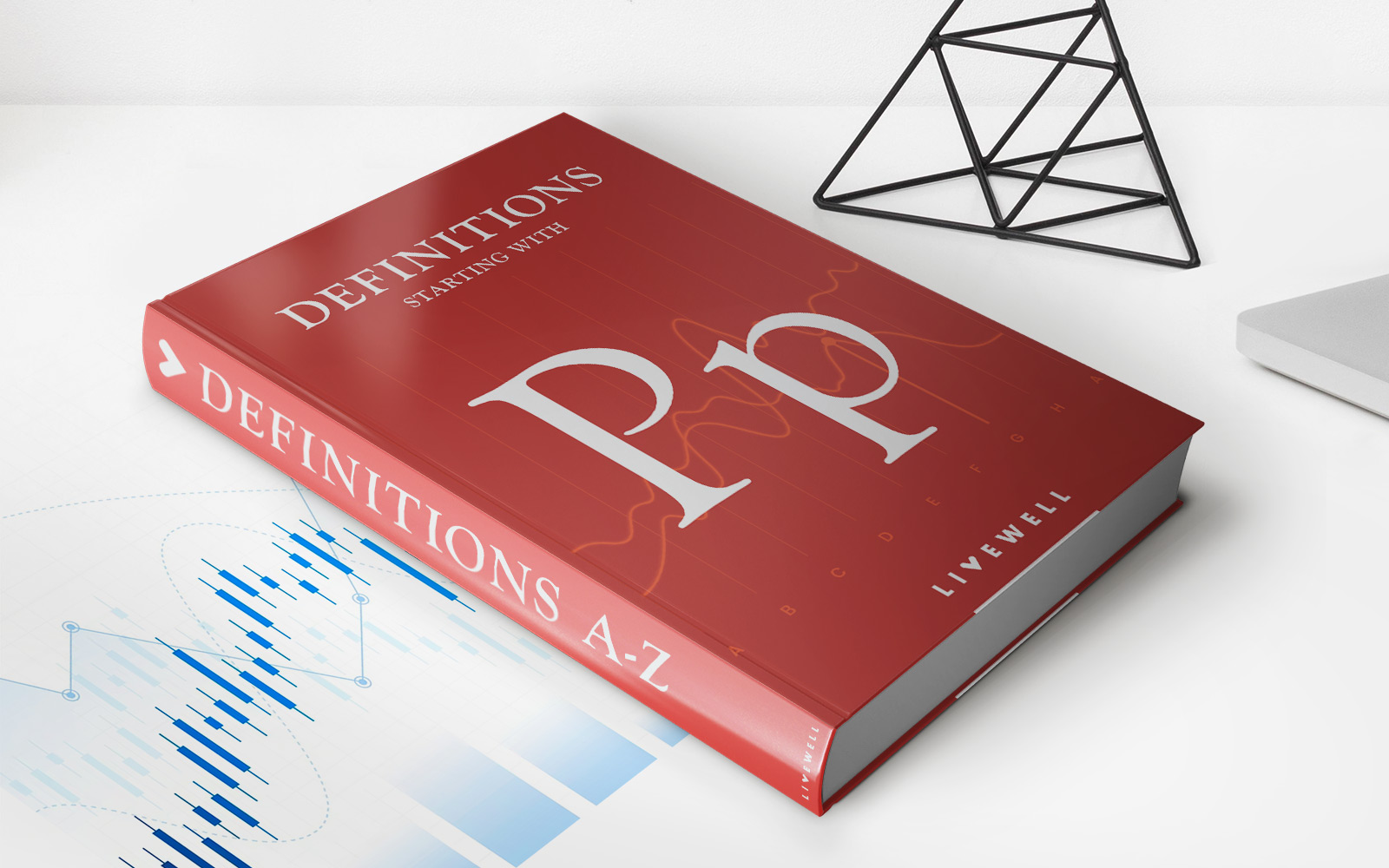

Finance
How Do You Split Life Insurance Beneficiaries?
Published: October 15, 2023
Discover the best way to split life insurance beneficiaries and secure your financial future with our expert finance guidance.
(Many of the links in this article redirect to a specific reviewed product. Your purchase of these products through affiliate links helps to generate commission for LiveWell, at no extra cost. Learn more)
Table of Contents
Introduction
Life insurance is an essential component of any comprehensive financial plan, providing financial protection to your loved ones in the event of your untimely death. When it comes to designating beneficiaries for your life insurance policy, it’s important to carefully consider your options and ensure that your wishes are carried out in a clear and effective manner.
The process of splitting life insurance beneficiaries involves determining who will receive the death benefit payout and in what proportions. This decision is crucial as it can impact the financial well-being of your loved ones and any assets you wish to pass on.
In this article, we will explore the factors you should consider when deciding how to split life insurance beneficiaries, the different types of beneficiaries, and special considerations that may arise in specific situations.
Remember, while this article will provide you with information and guidance, it is essential to consult with a professional financial advisor or estate planner who can understand your specific circumstances and provide personalized advice.
Let’s delve into the key factors you should take into account when determining how to split life insurance beneficiaries.
Factors to Consider
When deciding how to split life insurance beneficiaries, there are several important factors to take into consideration. These include:
- Family Dynamics: Consider the relationships between your potential beneficiaries. Are there any strained relationships or potential conflicts that could arise from an unequal distribution? It’s important to ensure fairness and prevent disputes among your loved ones.
- Financial Needs: Assess the financial needs of each potential beneficiary. Are there individuals who may be more dependent on the life insurance proceeds? Consider factors such as age, health, and current financial situation.
- Life Circumstances: Consider the life circumstances of your potential beneficiaries. Are there individuals who have special needs or disabilities that require additional financial support? Assess any unique circumstances that may influence how the payout is split.
- Charitable Intentions: If you have charitable organizations or causes that hold personal significance to you, consider including them as beneficiaries. This allows you to leave a lasting impact on causes that are close to your heart.
- Tax Implications: It’s important to be mindful of tax implications when splitting life insurance beneficiaries. Depending on your jurisdiction, there may be tax considerations for certain beneficiaries or specific payout distributions. Consult with a tax professional to understand the tax implications of your beneficiary designations.
By carefully considering these factors, you can make informed decisions about how to split your life insurance beneficiaries and ensure that your loved ones are provided for in the most appropriate manner.
Primary Beneficiaries
The primary beneficiaries are the individuals or entities who will receive the life insurance death benefit in the event of your passing. They are the first in line to receive the payout, and you can designate multiple primary beneficiaries, specifying the percentage or share of the benefit each will receive.
When selecting primary beneficiaries, it’s essential to be clear and specific in your designations. You can name specific individuals such as family members, friends, or business partners, or you can choose entities such as trusts or charities.
It’s important to regularly review and update your primary beneficiaries to ensure that your wishes align with your current circumstances and relationships. Life changes such as marriage, divorce, the birth of children, or the death of a beneficiary may necessitate revisions to your beneficiary designations.
Keep in mind that if a primary beneficiary predeceases you or is ineligible to receive the death benefit, the percentage or share they would have received can be reallocated to the remaining primary beneficiaries or to contingent beneficiaries.
By designating primary beneficiaries, you can ensure that the individuals or entities who are most important to you will be the first to receive the life insurance payout, providing them with financial support during a challenging time.
Contingent Beneficiaries
Contingent beneficiaries, also known as secondary or alternate beneficiaries, are individuals or entities who will receive the life insurance death benefit if the primary beneficiaries are unable to do so. These designations act as a backup plan in case any of the primary beneficiaries pass away before you or are otherwise unable to receive the payout.
When selecting contingent beneficiaries, it’s important to choose individuals or entities that you trust and who you believe will be most appropriate to receive the death benefit if the primary beneficiaries cannot. This could include family members, friends, or organizations.
Similar to primary beneficiaries, you can specify the percentage or share of the death benefit that each contingent beneficiary will receive. It’s crucial to be clear and specific in your designations to avoid any confusion or disputes among the beneficiaries.
Just like with primary beneficiaries, it’s important to regularly review and update your contingent beneficiaries to ensure that your wishes align with your current relationships and circumstances. Life changes or the passing of a primary beneficiary may necessitate revisions to your contingent beneficiary designations.
By naming contingent beneficiaries, you provide a safety net, ensuring that the life insurance death benefit will be distributed according to your wishes even if the primary beneficiaries are unable to receive it. This can provide you with peace of mind knowing that your loved ones or chosen organizations will be taken care of.
Per Stirpes vs. Per Capita
When determining how to split life insurance beneficiaries, you may come across two important terms: per stirpes and per capita. These terms refer to different methods of distributing the death benefit among your beneficiaries.
Per stirpes is a Latin term that means “by roots” or “by branch.” Under this method, the life insurance death benefit is divided among branches of the family. If one of your primary beneficiaries passes away before you, their share of the benefit will be divided equally among their descendants (typically children or grandchildren) who are also designated as beneficiaries. This ensures that the share intended for that branch of the family is still received by their heirs.
On the other hand, per capita distributes the death benefit equally among all living primary beneficiaries. If one of the primary beneficiaries passes away before you, their share is not passed on to their descendants. Instead, the remaining living beneficiaries receive a larger proportion of the death benefit.
Choosing between per stirpes and per capita depends on your personal preferences and family dynamics. Per stirpes may be beneficial if you want to ensure that each branch of your family receives a portion of the benefit, even if one primary beneficiary is unable to receive it. Per capita may be more suitable if you prefer an equal distribution among living primary beneficiaries and do not want shares to pass to the descendants of deceased beneficiaries.
It’s important to discuss the options with a financial advisor or estate planner who can provide guidance based on your specific circumstances and family structure.
Splitting Percentage among Beneficiaries
Deciding how to split the percentage of the life insurance death benefit among your beneficiaries is a crucial aspect of the beneficiary designation process. The specific percentages you allocate will determine the portion of the benefit that each beneficiary will receive.
When determining the splitting percentage, you should take into account various factors, including the financial needs, relationship dynamics, and personal considerations of your beneficiaries. It’s important to be equitable and fair in your distributions to avoid potential conflicts or resentment among your loved ones.
One common approach is to split the death benefit equally among all primary beneficiaries. For example, if you have named three individuals as equal primary beneficiaries, each will receive one-third of the benefit. This method ensures an equal distribution and is often used in situations where there are no significant differences in financial needs or relationships.
However, you may also choose to allocate different percentages based on factors such as financial dependence, personal circumstances, or the level of support you wish to provide to specific beneficiaries. For example, if you have a child with special needs who requires ongoing financial assistance, you may designate a higher percentage of the benefit to ensure their long-term care.
It’s important to communicate your intentions clearly to your beneficiaries and seek their understanding and agreement, especially if the percentage allocations differ significantly between individuals. Open and transparent conversations can help avoid confusion or potential disputes in the future.
Remember, it’s crucial to regularly review and update your beneficiary designations as life circumstances change. Marriage, divorce, the birth of children, or changes in financial situations may necessitate adjustments to the splitting percentage among your beneficiaries.
Consulting with a financial advisor or estate planner can provide valuable guidance in determining the appropriate splitting percentage among your beneficiaries based on your specific circumstances and objectives.
Special Considerations for Minors
When it comes to designating minors as beneficiaries of a life insurance policy, there are some important considerations to keep in mind. While minors can be named as beneficiaries, they cannot directly manage or access the funds until they reach the age of majority. This raises concerns about how to protect and manage the life insurance proceeds for their benefit.
Here are some key factors to consider when designating minors as beneficiaries:
- Appointing a Guardian: It’s crucial to designate a guardian or custodian who will oversee the management of the life insurance proceeds on behalf of the minor until they reach the age of majority. This can be a trusted family member, friend, or a professional guardian appointed by the court.
- Setting up a Trust: Consider establishing a trust to hold and manage the life insurance proceeds for the minor’s benefit. A trust can provide more control over how the funds are distributed and used. You can specify the terms and conditions under which the funds are to be distributed, such as for education, healthcare, or other specific needs.
- Trustee Selection: When creating a trust, it’s essential to carefully choose a trustee who will act in the best interests of the minor. This individual or entity will be responsible for managing the funds, making investment decisions, and distributing them according to the terms of the trust.
- Estate Planning Documents: Ensure that you have comprehensive estate planning documents in place, such as a will and/or a living trust, to clearly outline your wishes regarding the management and distribution of the life insurance proceeds for the benefit of the minor.
- Regular Review: Just like with any beneficiary designation, it’s important to review and update the guardianship and trust provisions for minors regularly. Life circumstances and relationships may change over time, requiring modifications to ensure the appropriate management and protection of the funds.
Consulting with an estate planning attorney can help you navigate the complexities of designating minors as beneficiaries and establish a plan that ensures the proper management and protection of the life insurance proceeds for their benefit.
Estate as the Beneficiary
In some cases, individuals may choose to designate their estate as the beneficiary of their life insurance policy. This means that the death benefit will be paid directly to the estate upon their passing, rather than to specific individuals or entities.
Designating the estate as the beneficiary offers some advantages and considerations:
- Flexibility: By naming the estate as the beneficiary, you retain the flexibility to distribute the life insurance proceeds according to the instructions outlined in your will or as directed by the probate court. This allows you to have more control over the distribution, even if your circumstances or relationships change.
- Debts and Expenses: If you have outstanding debts or final expenses, designating the estate as the beneficiary can help ensure that these obligations are paid off before the remaining funds are distributed to your heirs. It provides a source of liquidity to settle any financial obligations that may arise.
- Tax Implications: Designating the estate as the beneficiary may have potential tax implications. The death benefit proceeds can become part of your estate and may be subject to estate taxes and other expenses. Consult with a tax professional or estate planner to understand the specific tax implications in your jurisdiction.
- Probate Process: One consideration of naming the estate as the beneficiary is that the life insurance proceeds will go through the probate process before being distributed to your heirs. This process may involve court supervision and potentially lead to delays in the distribution of funds.
It’s important to carefully weigh the advantages and considerations when deciding to designate the estate as the beneficiary of your life insurance policy. Consulting with a financial advisor or estate planning attorney can provide valuable guidance based on your specific circumstances and objectives to help you make an informed decision.
Regularly Reviewing and Updating Beneficiaries
Reviewing and updating your life insurance beneficiaries on a regular basis is a crucial step in ensuring that your wishes are carried out accurately. Life circumstances can change over time, and it’s important to reflect these changes in your beneficiary designations.
Here are some key reasons why regularly reviewing and updating beneficiaries is essential:
- Life Changes: Major life events such as marriage, divorce, the birth or adoption of children, or the passing of a beneficiary may necessitate changes to your beneficiary designations. Failing to address these changes can result in unintended consequences and the potential for disputes among your loved ones.
- Relationship Dynamics: Relationships with family members, friends, or business partners can evolve over time. It’s important to ensure that your beneficiary designations accurately reflect your current relationships and alignments.
- Financial Considerations: Your financial situation may change, and you may want to adjust your beneficiary designations accordingly. This can include changes in your overall financial goals, the need to provide for specific individuals, or the inclusion of charitable organizations.
- Tax Implications: Tax laws and regulations may change over time, and this can impact the tax implications of your beneficiary designations. Regularly reviewing your beneficiaries allows you to stay up to date with any tax considerations and make necessary adjustments to minimize potential tax burdens.
- Policies from Multiple Providers: If you have multiple life insurance policies from different providers, it’s important to review and update the beneficiaries for all policies. This helps ensure consistency and avoids any confusion or discrepancies in the event of a claim.
To facilitate the process of reviewing and updating beneficiaries, it’s a good practice to establish a regular schedule. This can be an annual or biennial review, or you can choose to reevaluate your beneficiaries whenever significant life events occur.
Remember, regularly reviewing and updating your beneficiaries is a proactive approach to ensure that your life insurance benefits are allocated as intended and aligned with your current wishes and circumstances.
Conclusion
Splitting life insurance beneficiaries is a critical decision that impacts the distribution of your death benefit and the financial well-being of your loved ones. By considering factors such as family dynamics, financial needs, and charitable intentions, you can make informed choices when designating primary and contingent beneficiaries.
Understanding the difference between per stirpes and per capita distribution methods allows you to choose the most suitable option for your family structure and preferences. Additionally, carefully determining the splitting percentage among beneficiaries ensures fairness and aligns with the individual circumstances and financial needs of each individual.
Special considerations arise when designating minors as beneficiaries, requiring the appointment of a guardian and potentially setting up a trust to manage the life insurance proceeds on their behalf.
Choosing whether to designate the estate as the beneficiary offers flexibility and control but has tax and probate implications that should be carefully considered.
Regularly reviewing and updating your beneficiary designations is crucial to ensure that changes in life circumstances, relationship dynamics, and financial goals are accurately reflected. By doing so, you can align your life insurance policy with your current intentions and minimize the potential for disputes or unintended outcomes in the future.
Remember, consulting with a financial advisor or estate planner can provide valuable insights specific to your situation and help you navigate the complexities of splitting life insurance beneficiaries.
By taking the time to carefully consider and update your beneficiary designations, you can ensure that your life insurance proceeds are distributed in accordance with your wishes, providing financial security and peace of mind for your loved ones during challenging times.














